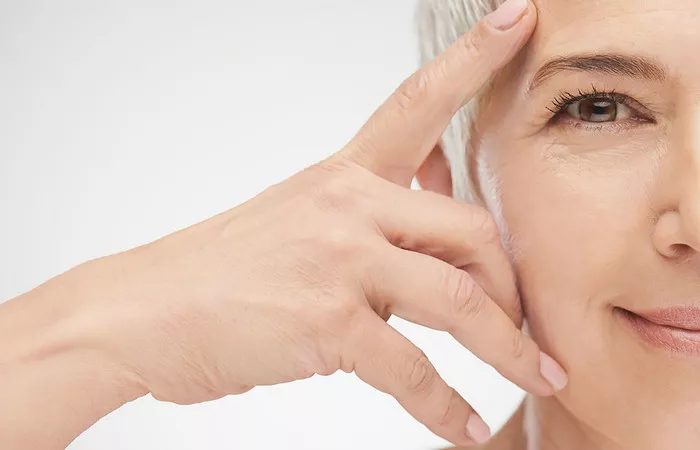Wrinkles are a natural part of the aging process, but they can also be caused by factors such as sun exposure, smoking, and genetics. Many people wonder what wrinkles look like and how they can be prevented or treated. In this article, we will explore what wrinkles look like, including their appearance and location on the face and body, as well as potential causes and treatments.
What Do Wrinkles Look Like?
Wrinkles are lines or creases that appear on the skin as a result of the natural aging process or other factors such as sun damage, smoking, and repetitive facial expressions. Wrinkles can appear anywhere on the body, but they are most commonly found on the face, neck, and hands.
The appearance of wrinkles can vary depending on several factors, including the depth and location of the wrinkle, the individual’s skin type and tone, and the underlying causes of the wrinkle. Some common characteristics of wrinkles include:
Fine lines: Fine lines are small, shallow wrinkles that are often the first signs of aging. They can appear on the forehead, around the eyes, and around the mouth.
Deep wrinkles: Deep wrinkles are more pronounced than fine lines and can be caused by a loss of collagen and elastin in the skin. They can appear on the forehead, between the eyebrows, and around the mouth and nose.
Crow’s feet: Crow’s feet are fine lines that appear at the corners of the eyes and are often caused by sun damage and repetitive facial expressions.
Frown lines: Frown lines are deep wrinkles that appear between the eyebrows and can be caused by repetitive facial expressions such as frowning or squinting.
Laugh lines: Laugh lines are deep wrinkles that appear around the mouth and are often caused by repetitive facial expressions such as smiling or laughing.
Potential Causes of Wrinkles
Wrinkles can be caused by a variety of factors, including the natural aging process, sun exposure, smoking, and genetics. Some common causes of wrinkles include:
Natural aging process: As we age, our skin becomes less elastic and less able to retain moisture, which can lead to the formation of wrinkles.
Sun exposure: Exposure to the sun’s harmful UV rays can damage the skin and lead to the formation of wrinkles, age spots, and other signs of aging.
Smoking: Smoking can damage the skin and lead to the formation of wrinkles, particularly around the mouth.
Genetics: Some people may be more prone to developing wrinkles due to genetic factors such as skin type and tone.
Repetitive facial expressions: Repetitive facial expressions such as frowning, squinting, and smiling can cause wrinkles to form over time.
Treatments for Wrinkles
There are several treatments available for wrinkles, including topical creams, injectables, and cosmetic procedures. Some common treatments for wrinkles include:
Topical creams: Topical creams containing retinoids, antioxidants, and other ingredients can help reduce the appearance of fine lines and wrinkles.
Injectables: Injectables such as Botox and dermal fillers can help reduce the appearance of wrinkles by relaxing the muscles that cause them or by filling in areas that have lost volume.
Cosmetic procedures: Cosmetic procedures such as chemical peels, laser resurfacing, and microdermabrasion can help reduce the appearance of wrinkles by removing the outer layer of skin and stimulating collagen production.
It is important to consult with a qualified healthcare provider or cosmetic surgeon to determine the best treatment options for your individual needs and goals. Your provider can help you determine which treatments are safe and effective for your skin type and tone, and can provide you with information on how to minimize potential risks and complications.
Preventing Wrinkles
While it may not be possible to completely prevent wrinkles, there are several steps you can take to minimize their appearance and delay their onset. Some tips for preventing wrinkles include:
Protecting your skin from the sun: Wearing protective clothing and using sunscreen can help prevent sun damage and reduce the risk of developing wrinkles.
Quitting smoking: Quitting smoking can help improve the health of your skin and reduce the risk of developing wrinkles.
Eating a healthy diet: Eating a diet rich in fruits, vegetables, and other nutrient-dense foods can help promote healthy skin and reduce the risk of developing wrinkles.
Staying hydrated: Drinking plenty of water and staying hydrated can help keep your skin looking healthy and youthful.
Avoiding repetitive facial expressions: Avoiding repetitive facial expressions such as frowning, squinting, and smiling can help prevent wrinkles from forming over time.
Conclusion
In conclusion, wrinkles are a natural part of the aging process and can also be caused by factors such as sun exposure, smoking, and genetics. Wrinkles can appear anywhere on the body, but they are most commonly found on the face, neck, and hands. The appearance of wrinkles can vary depending on several factors, including the depth and location of the wrinkle, the individual’s skin type and tone, and the underlying causes of the wrinkle. There are several treatments available for wrinkles, including topical creams, injectables, and cosmetic procedures. It is important to consult with a qualified healthcare provider or cosmetic surgeon to determine the best treatment options for your individual needs and goals. By taking steps to prevent wrinkles and seeking out appropriate treatments, many people are able to maintain healthy, youthful-looking skin as they age.


